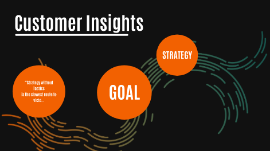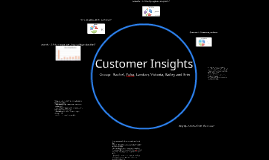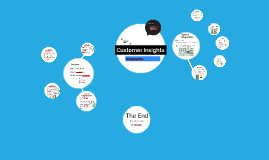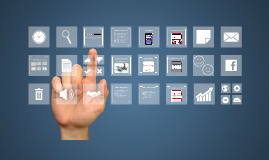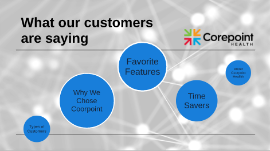Unlocking Customer Insights
Transcript: Future Trends in AI Customer Profiling Exploring the cutting-edge technologies shaping the future of customer profiling and personalized marketing strategies. Summary and Key Takeaways Emerging Technologies in Customer Profiling In conclusion, AI-driven customer profiling offers enhanced customer insights, personalized marketing, and improved customer engagement, leading to higher conversion rates and customer loyalty. Advancements in AI, such as predictive analytics and natural language processing, are revolutionizing customer profiling for targeted marketing campaigns. Deep Learning for Customer Insights Deep learning models, such as neural networks, extract complex patterns from large datasets to provide in-depth insights into individual customer behavior and preferences. Machine Learning in Customer Profiling AI Algorithms and Models Machine learning algorithms analyze patterns in data to create predictive models for segmenting customers based on behavior and preferences. Exploring the Role of Machine Learning and Deep Learning in Customer Profiling Customer Retention Strategies Using AI-based customer profiling, Company Z reduced customer churn by 18% through targeted retention strategies and customized loyalty programs. Personalized Marketing Campaigns Success Stories of AI Profiling Through AI profiling, Company Y achieved a 30% higher engagement rate in email marketing campaigns, leading to a 25% increase in conversion rates. Enhancing Customer Experience AI-based customer profiling has transformed businesses by providing deep insights into customer behavior and preferences, leading to significant growth and personalized experiences. Data Collection and Clean-Up Utilizing Existing Data AI-driven customer profiling resulted in a 20% increase in customer satisfaction and a 15% rise in repeat purchases for Company X. Collecting relevant data from various sources and ensuring its quality through cleaning processes is crucial for accurate customer profiles. Data Mining and Analysis Techniques Effective data utilization is key in AI customer profiling. Cleaning and mining data are essential steps for accurate insights and personalized customer experiences. Utilizing advanced data mining techniques like clustering and association analysis helps in uncovering hidden patterns and trends within the data for better customer insights. Evolution of AI in Customer Profiling AI algorithms have transformed customer profiling by utilizing predictive analytics and machine learning. This enables personalized recommendations and targeted marketing strategies based on individual behavior patterns. Traditional Profiling Techniques Customer Profiling Methods Traditional customer profiling involved demographic data and basic segmentation. Methods like surveys and focus groups were used to gather insights. Exploring the evolution of customer profiling approaches from traditional techniques to AI-driven strategies. Enhanced Personalization Benefits of AI-Based Profiling By leveraging AI algorithms, businesses can create highly personalized customer experiences, catering to individual preferences and behavior patterns. Enhancing Customer Profiling with AI AI-driven profiling leads to enhanced personalization and improved customer segmentation, revolutionizing customer understanding and engagement. Overview of Existing Customer Data Improved Customer Segmentation AI-based profiling enables precise segmentation of customers based on their characteristics and behaviors, allowing targeted marketing strategies and tailored recommendations. Existing customer data includes demographic information, purchase history, online behavior, and preferences. This data serves as the foundation for customer profiling, allowing businesses to create detailed customer personas and targeted marketing campaigns. Importance of Customer Profiling Understanding Customer Profiling Customer profiling enables businesses to understand their target audience better, leading to improved customer engagement and loyalty. By analyzing existing data, businesses can tailor their marketing strategies and product offerings to meet customer needs effectively. Utilizing Existing Data for Personalized Insights Customer profiling is a strategic tool that helps businesses gain insights into their customers' behaviors and preferences. It allows for targeted marketing strategies and personalized customer experiences. Conclusion Summarize each point you made Give quick call-backs so your audience remembers Make it clear this is the end Follow up with another point Provide any important context here Put a bold statement here Provide more context Make a bold statement Provide context for your audience and make it easy for them to follow. Provide context for your audience and make it easy for them to follow. Expand on the bold statement above. Remember to break up your words so your audience can follow. Follow up with another point Keep it quick You have space for details






